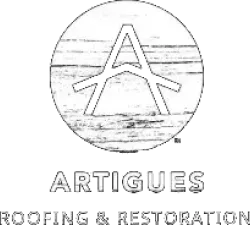
Isle of Palms, South Carolina: Architectural Heritage and Coastal Roofing Evolution
Isle of Palms, South Carolina, is a beautiful barrier island situated just off the coast of Charleston. Known for its stunning beaches and vibrant coastal community, Isle of Palms has a rich history shaped by its natural beauty and strategic location. In this article, we explore the island's historical development, its architectural evolution, and the roofing practices that have adapted to the island's unique environmental challenges.
Early History: The Sewee Tribe and Strategic Importance
The history of Isle of Palms dates back to its early inhabitants, the Sewee tribe, who utilized the island's resources for fishing, hunting, and gathering. European exploration began in the late 17th century, and the island was initially known as "Hunting Island" due to its use by early settlers for hunting and recreation.
The island's strategic location near Charleston made it of military interest during the Civil War. Despite this, Isle of Palms remained relatively undeveloped until the late 19th century. The island’s natural environment, with its sandy beaches and maritime forests, became integral to its early settlement and use patterns.
The 20th Century: Resort Development and Architectural Influence
The transformation of Isle of Palms from a quiet retreat to a popular resort destination began in the early 20th century. In 1899, a group of investors recognized the island's potential for tourism and established the Isle of Palms Resort. This development was marked by the construction of a trolley line connecting the island to Charleston, making it accessible to a broader range of visitors.
The architectural style of the early 20th century was inspired by the desire to create a picturesque coastal retreat. Beach cottages and hotels designed in Victorian and Queen Anne styles featured ornate detailing, expansive porches, and large windows designed to offer panoramic views of the ocean. Wood shingles were the roofing material of choice during this period due to their aesthetic appeal and ability to withstand the coastal climate.
Mid-Century Growth and Roofing Innovation
Following World War II, Isle of Palms experienced significant growth, with residential development accelerating due to improved access. The construction of the Isle of Palms Connector in 1946 increased connectivity between the island and Charleston, leading to more housing demands and a growing permanent population.
During this period, Ranch-style homes and modern bungalows became popular on the island. These homes typically featured low-pitched roofs with asphalt shingles, a practical roofing solution known for its affordability, durability, and resistance to the salty, humid air of coastal regions. Asphalt shingles became the dominant roofing material, providing a low-maintenance solution to homeowners seeking to safeguard their homes against tropical storms and saltwater exposure.
As the island's popularity grew, maintaining the integrity of roofs became essential. Roof repairs and replacements became common, as the harsh coastal environment wore down materials over time. The evolution of roofing practices during this time was crucial for ensuring homes could withstand the extreme weather conditions, including hurricanes and high winds.
Contemporary Architecture: Sustainability and Resilience in Roofing Practices
In recent decades, Isle of Palms has continued to grow while striving to balance modern development with the preservation of its natural beauty. Today’s architecture on the island often combines traditional coastal design with modern elements. Elevated structures to mitigate flood risk, along with expansive porches and open floor plans, are common features designed to connect homes with the island's natural surroundings.
The evolution of roofing practices on Isle of Palms has mirrored advancements in technology and a growing focus on environmental sustainability. Metal roofing has become increasingly popular due to its durability, heat-reflective properties, and energy efficiency. Not only do metal roofs withstand the island’s harsh conditions, but they also contribute to reducing energy consumption by reflecting heat.
Additionally, the use of composite shingles and other eco-friendly roofing materials is on the rise. These materials align with the broader trends in sustainable construction, reflecting a growing awareness of the need to minimize the ecological impact of building practices on the island.
Roofing Solutions for Coastal Homes: What You Should Know
As Isle of Palms faces ongoing environmental challenges such as hurricanes, high humidity, and rising sea levels, selecting the right roofing material is critical for homeowners. The harsh conditions demand roofing options that provide resilience, longevity, and energy efficiency. Here are some of the best roofing materials for Isle of Palms homes:
Metal Roofing: Metal roofs offer superior protection against extreme weather conditions, including high winds, rain, and hurricanes. Known for their long lifespan and energy efficiency, metal roofs are a wise choice for homeowners in coastal areas like Isle of Palms.
Asphalt Shingles: Asphalt shingles remain a popular and affordable choice for homeowners. Modern versions offer improved durability and weather resistance, making them ideal for coastal climates. They are also available in a variety of colors and styles to suit different architectural designs.
Composite Shingles: Made from a blend of materials, composite shingles offer both aesthetic appeal and environmental benefits. They provide durability comparable to traditional shingles but with the added benefit of being eco-friendly.
Green Roofs and Solar Panels: For homeowners looking to make a sustainable choice, green roofs and solar panels offer significant benefits in terms of energy efficiency and environmental responsibility. These innovations help reduce energy costs and contribute to the overall sustainability of the island.
The Future of Isle of Palms: Resilience and Sustainable Design
As Isle of Palms continues to evolve, the need for resilient and sustainable roofing solutions will become even more critical. Building codes have become stricter, with an emphasis on storm-resistant and energy-efficient designs. Architectural guidelines on the island now emphasize resilience, with structures built to withstand high winds, storm surges, and flooding Common risks in this coastal area.
Incorporating hurricane straps, reinforced materials, and innovative roofing technologies ensures that homes can survive the harsh conditions that often accompany the hurricane season. These measures will help preserve Isle of Palms’ historical and natural heritage while accommodating modern needs.
Isle of Palms, A Legacy of Coastal Resilience
Isle of Palms, South Carolina, has undergone significant changes over the centuries, transitioning from a remote hunting ground to a thriving resort destination. The architectural evolution of the island reflects these transformations, incorporating both traditional coastal designs and modern innovations that respond to the unique challenges of coastal living.
For homeowners on Isle of Palms, ensuring the integrity of your roof is essential to maintaining the longevity of your home. Whether you are installing a new roof or restoring an existing one, selecting materials like metal roofing, composite shingles, and solar panels will help protect your home and the environment for years to come.
If you're in need of roof restoration or roof repairs in Isle of Palms, our team of experts is here to provide reliable solutions tailored to your home’s needs. Contact us today to explore the best roofing options for your island retreat.
AREAS WE SERVICE
AREAS WE SERVICE
NEED ANY ROOFING HELP? CALL US NOW!
GET YOUR FREE QUOTE OR INSURANCE CLAIM ASSESSMENT
By submitting your information, you agree to start receiving notifications and promotional SMS from Artigues Roofing. You can reply "stop" at any time to unsubscribe. I agree with the privacy policy and terms and conditions.

Go Above & Beyond with
Artigues Roofing &
Restoration
SERVICES
COMPANY
GET IN TOUCH
Email: [email protected]
Address: 75 Port City, Landing Suite 110. Mount Pleasant, SC. 29464.
NEED ANY ROOFING HELP? CALL US NOW!
GET YOUR FREE QUOTE OR INSURANCE CLAIM ASSESSMENT
By submitting your information, you agree to start receiving notifications and promotional SMS from Artigues Roofing. You can reply "stop" at any time to unsubscribe. I agree with the privacy policy and terms and conditions.

Go Above & Beyond with
Artigues Roofing &
Restoration
SERVICES
COMPANY
GET IN TOUCH
Email: [email protected]
Address: 75 Port City, Landing Suite 110. Mount Pleasant, SC. 29464.





